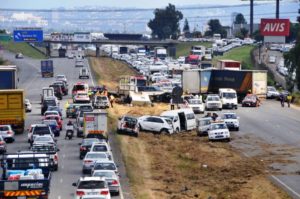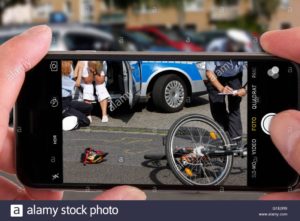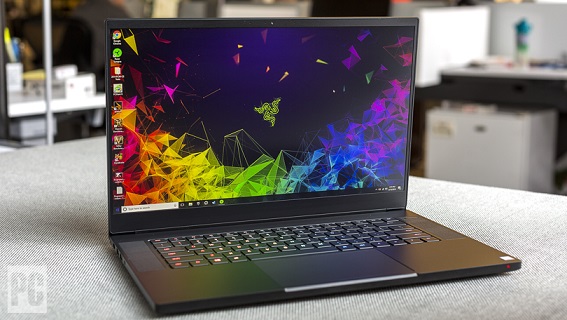To win an insurance claim or Personal Injury Lawsuit, you will need evidence to aid your legal responsibility and harm claims. Here are some pointers to help...
These Are The Evidence You Will Need For A Personal Injury Claim Case

May 26,
2021
2021
These Are The Evidence You Will Need For A Personal Injury Claim Case
- Posted by: David Mag
- 0 Comment
Physical Evidence
Image Source
Who was at fault for an accident is from time to time shown via a bit of “physical” evidence -- something you may see or contact, in preference to an outline of what took place. Examples include a worn or broken stair that precipitated a fall, the dent in a car showing in which it became hit, or an overhanging branch that blocked visibility on a bike path.
Also, physical proof can help prove the extent of harm. For instance, damage to a car can reveal how tough a collision turned into, and torn or bloodied garb can display your physical injuries very dramatically.
Physical evidence that isn't always preserved or photographed in the first few days following an Accident can get lost, changed by time or weather, destroyed, or repaired. So, any bodily proof you've got -- your broken car or motorcycle, your damaged garb, a defective product -- need to be preserved exactly as it became at the time of the accident. You can later display it to a coverage enterprise as evidence of what happened.
Police Reports in Car Accident Cases
Image Source
After any slight or critical vehicle accident, it is essential to get the police informed. The police report will normally be the cross-to piece of proof determining liability for causing the accident - even though it also includes inadmissible in courtroom. See Police Reports as Evidence to study more about acquiring and using them at some point of agreement/settlement negotiations.
Photographs
Image Source
If you do not have a bit of bodily proof, or for any purpose can't keep it, the best choice is to photograph it. Regular photos are better than Polaroids. Not only do they usually show extra element and more correct light situations, however, but you'll also be able to give an Insurance company prints whilst preserving onto the negatives or unique virtual snapshots. These days, almost all cell phones have virtual cameras of sufficient quality to apply to accumulate proof - and they may be almost always ready to be used.
Take a number of photographs from different angles so you can later pick out those that show maximum certainly some things you need to highlight to the insurance company. You may additionally want to take a video.
Take the pictures as soon as feasible in order that they'll accurately represent the situation of the evidence immediately after the accident. To set up the date the pictures have been taken, ask a friend or partner to look at you while you're taking the images and to write down a brief observe confirming the date the snapshots were taken. Process the pix right there and ensure the date is indicated on the lower back of the prints, to your receipt, or at the virtual document.
You have the right to take photos in public locations, so if your accident occurred in an area that is open to the general public, you could cross again and take images. If the location has been closed, attempt to get permission from whoever is in charge -- for example, if you were injured in a slip and fall at a shopping Mall, ask the mall manager or security personnel if you could go beyond the barriers. If the supervisor or security personnel deny your request, make a note of that, and be sure to write down the date, the name of the person that denied your request, and the motives are given for not permitting you to take photos. Then write to the Insurance adjuster for the mall, give an explanation for what happened, and demand permission to get in and take the photographs you want. Tell the adjuster that it is “terrible faith” to refuse permission to look at and picture the scene of the accident.
Returning to the Scene
Image Source
If an Accident took place somewhere aside from your Residence, return to the scene as quickly as possible to find any proof and photograph any situations you agree with may additionally have prompted or contributed to the accident. You may be surprised to locate something which you had not been aware of whilst the accident occurred, however, which can help provide an explanation for what took place: a worn or torn spot on which you fell, a traffic light that isn't operating. While searching around, you could additionally locate witnesses who noticed what came about or who know of different injuries that took place in the same spot.
Take pictures of the Accident scene from different angles -- in particular your view of things right before the accident -- to keep a good photo of the scene in your mind. Photograph the scene on the same time of day as your Accident happened. For car injuries, image the scene at the same day of the week to expose the amount of traffic it gets.
Evidence Of Your Injuries
Image Source
Photographs of your accidents also assist in analyzing the extent of your damages. Detailed photos of massive bruising, burns, lacerations assist to tell the tale of your ache.
Without query although, scientific facts are the key to analyzing the volume of your injuries - and in the end, the amount of reimbursement you ought to call for. Even the form of scientific remedy you get is vital - and you could bet the defendant to your case is going to request your clinical statistics. For this motive, it's important to see a medical doctor and observe any treatment hints - mainly referrals to different specialists.
SOURCE: YuGo.com.ng
Did You Enjoy Reading This Article?
Share post with friends on
Other Related Post👇









Post a Comment